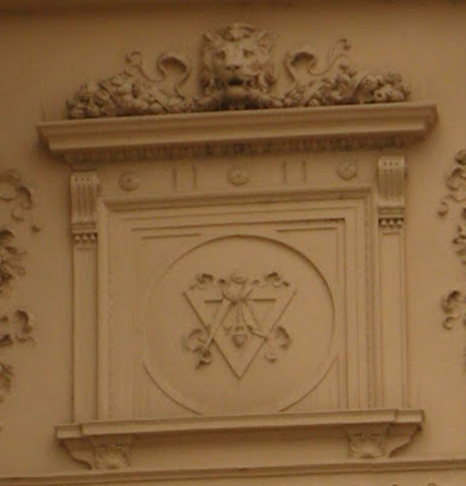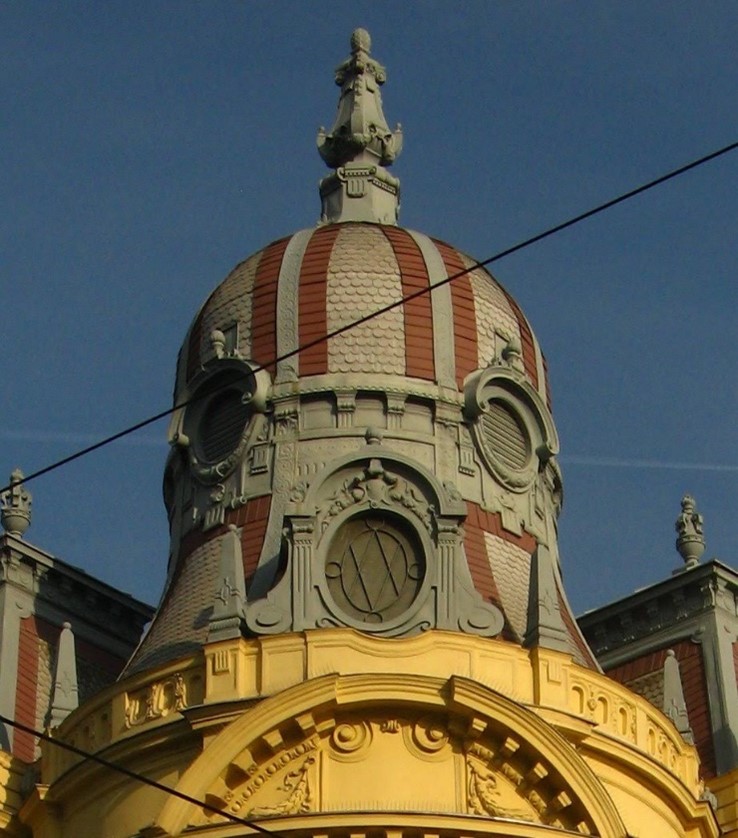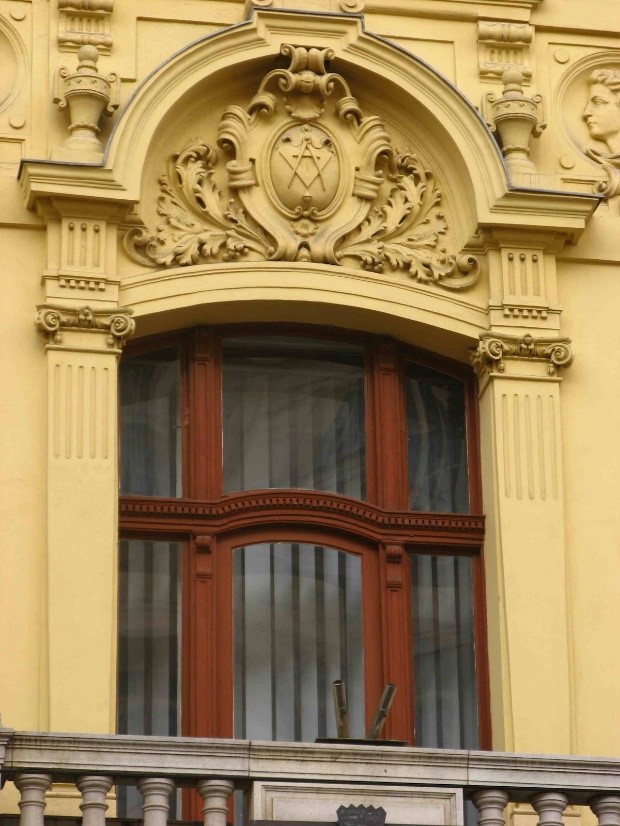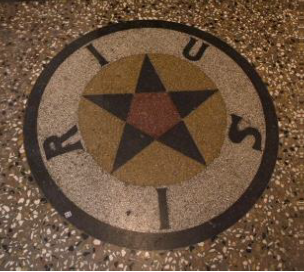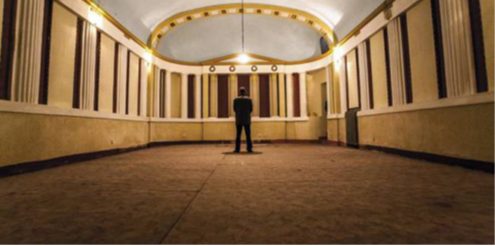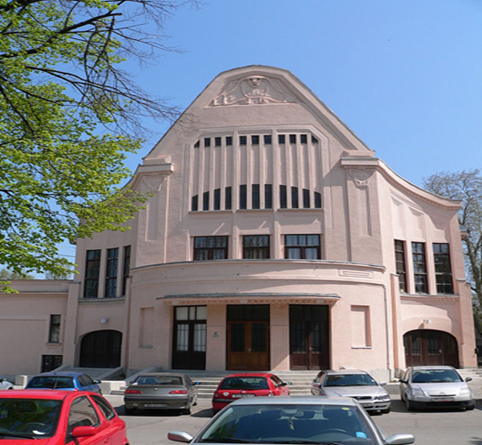CROATiA
Freemasonry in Croatia
The Grand Regular Lodge of Croatia was founded on the principle of 1919 split in Freemasonry in the former Yugoslavia. By the end of the First World War, there were several active Freemasonry Lodges under the protection of the Symbolic Grand Lodge of Hungary
The same year, 1919., the Grand Lodge of Serbs, Croats and Slovenians “Yugoslavia” headquartered in Belgrade was formed and almost all Croatian lodges entered under its protection.
The light that was brought back to Zagreb in 2017 was the light from that time, as all the other lodges formed in Croatia during the past 30 years received the light from Austria or Italy, our light is the original light and returned after almost one hundred years.
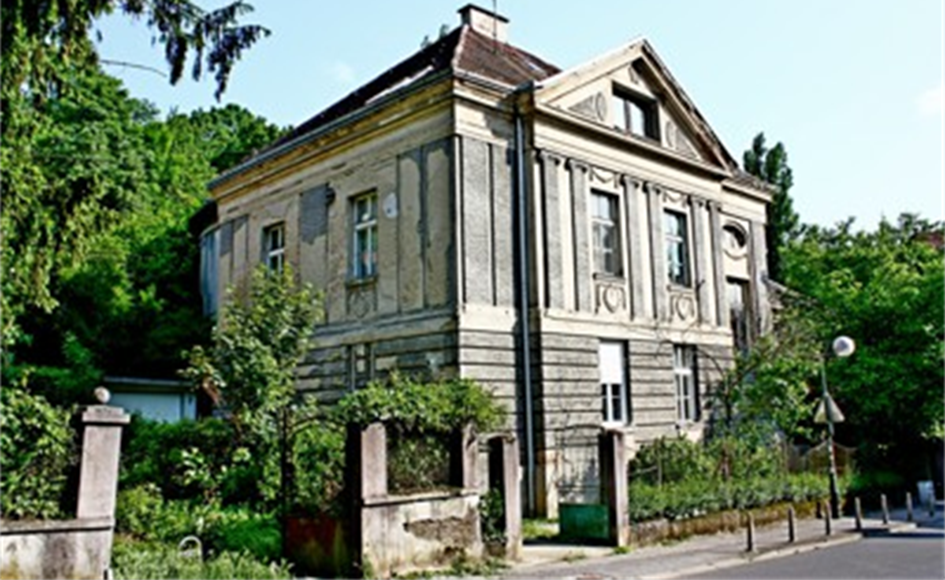
Main train station building in Zagreb
The Building of the Embassy of Greece and Consular Office, on the corner of Francuska Street no. 33 and Strahinjića Bana Street no. 76, was built to the designs of the Society for Technical Enterprises “Pionir”. On both sides of it, an emblem intertwined with highly stylized Masonic symbols is clearly visible.
The building of the former Directorate of the Royal Hungarian State Railways
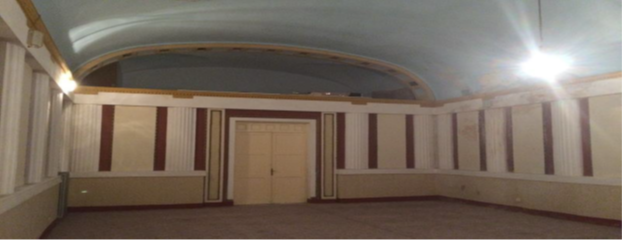
Lodge Sirius Rijeka
Sirius is the most famous Rijeka lodge, which lasted from 1901 to 1925.
On March 9, 1901, in the presence of fifteen founding members,
out of a total of sixteen, the Rijeka Sirius lodge was inaugurated in the Whitehead house.
House Sirius was built in 1912 according to the designs of Giovanni Rubinich. It is known as the seat of Rijeka freemasons, which is confirmed by the decoration of the facade, which was designed by Rubinich. Rubinich himself was a member of the lodge.
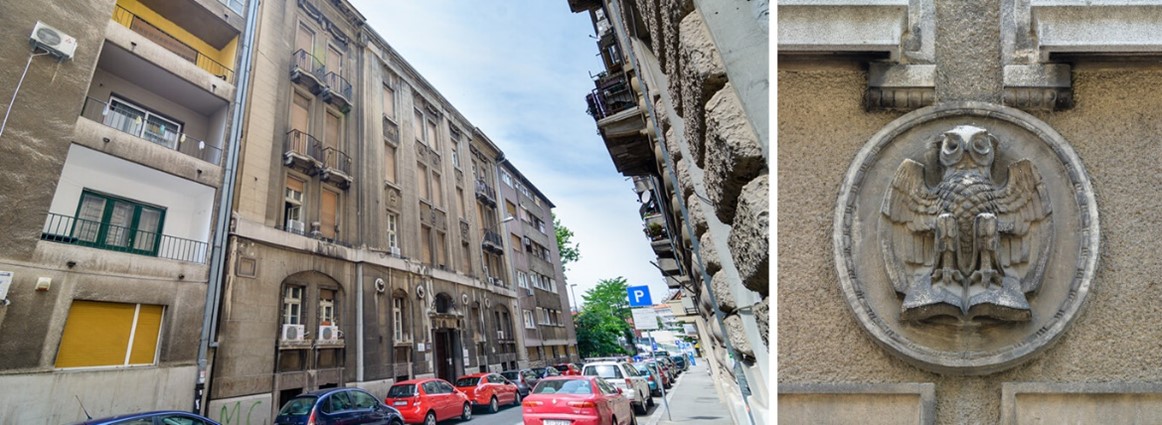
Cinema Urania Osijek
The building of the Urania cinema was built in 1912 by freemasons from the Lodge Vigilantia (Budnost), according to the project of the architect and freemason Viktor Axmann, who received a prestigious award for it at the cinema exhibition in Vienna. The building is recognizable by its unusual convex-concave facade with a wavy pediment at the top of which is a relief, and until today it has preserved the original function of a cinema and is considered one of the most significant achievements of art nouveau architecture in Croatia.
cartographIE
France
Andorra
Austria
In Austria, the paths lead to Vienna, rich in Masonic history, which can be discovered throughout its well-restored streets and buildings. Exploring this history takes one back to a significant heritage, from Mozart to the Austro-Hungarian Empire, where Freemasonry is prominently present.
Belgium
Canaries
Following the autonomist movement within the Grand Orient of Spain in 1920, the Canarian lodges Añaza, Abora and Andamana jointly decided to create a Regional Grand Lodge of the Canary Islands. For this reason, on 28 November 1922, a committee met in Santa Cruz de Tenerife to organise a Regional Grand Lodge, made up of representatives of the Añaza (José Freixa Martí), Abora (Julián Rodríguez Ballester) and Andamana (Compagnie Juan Vich) Lodges, agreeing to appoint Amado Zurita Colet, from Añaza, as President.
On 20 February 1923, the Supreme Council of the 33rd Degree for Spain and its Dependencies issued a communication to Añaza Lodge 270 in which it decided to authorise the constitution of a Regional Grand Lodge of the Canary Islands which would sponsor the Lodges established there ‘in view of the existing reasons for doing so’.
The transition to democracy restored the legality of Spanish Freemasonry. Since the early 1980s, Canarian Freemasonry has concentrated on Gran Canaria, Tenerife and Lanzarote, initially attaching itself to the Grand Lodge of Spain and its Supreme Council of the 33rd Degree, not without some English reticence due to the philosophy of the Rite of Emulation. But the Masonic feelings of Canary Island Freemasons, linked to their historical tradition, are far removed from the Anglo-Saxon concept of ‘brotherhood’, not only in ritual but also in way of thinking.
Croatia
North Macedonia
Poland
In Poland, the journey first leads to the University Library of Poznan to see 80,000 Masonic works in various languages, including 2,400 in French dating back to 1730, which were stolen during World War II by the Nazis.
Next, in Tarnowskie Góry, a UNESCO-listed town, the cultural heritage has been enriched thanks to the town hall, which recovered objects from two Masonic lodges destroyed by the Nazi regime to create a museum. In this region, rich in silver mines, Freemasonry was highly developed. In the same town, a beautifully reconstructed castle houses a Masonic museum and a temple with Masonic furniture, where the lodge of the Grand Lodge of France has been able to meet for its work. One can spend a few days there, as there is a hotel and a restaurant.
Portugal
Our Institution, characterised by its commitment to Regular and Traditional Freemasonry, plays a significant role in the preservation and promotion of Masonic principles.
Romania
Since 1848, there existed in the center of Bucharest a ‘Street of the Freemasons,’ which retained this name until October 1940 (renamed Ștefan Furtună during the communist era and Mircea Vulcănescu since 1990). The ‘Master Mason Manole Walk’ attests to a myth of the guild of church builders in the Middle Ages on the territory of present-day Romania, which Mircea Eliade had already connected to the founding myths of Freemasonry. The country offers explorers all sorts of discoveries of remarkable architectural and Masonic heritage sites.
Serbia
A stroll through Belgrade offers many architectural surprises, revealing true treasures engraved on the facades of buildings. You will also find two suggested walks in the city, which provide a glimpse into Serbian heritage that has been miraculously preserved despite challenging periods since 1940. Enjoy the discovery !


